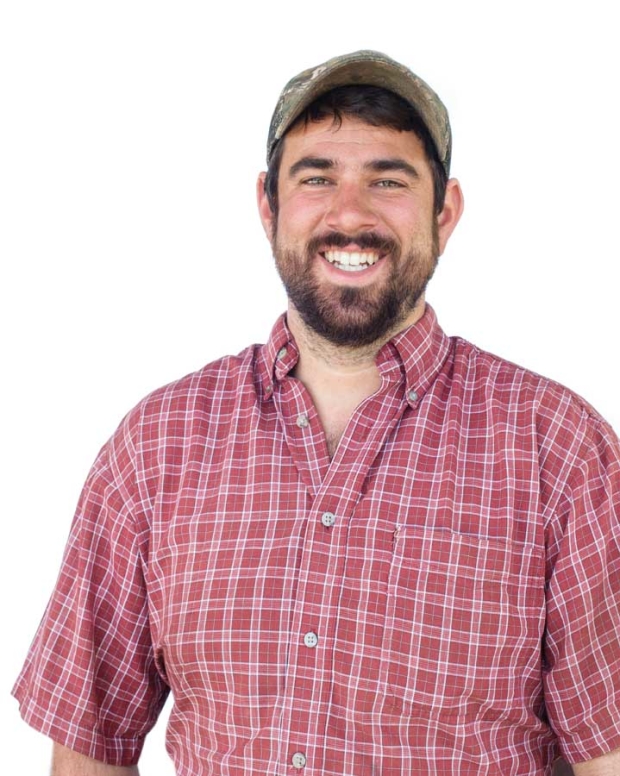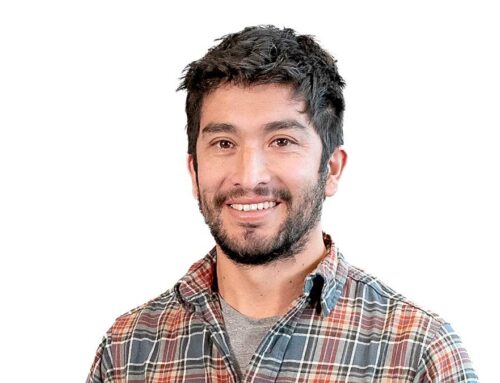grower / Escalon, California
age / 27
crops / Peaches, almonds, walnuts
business / Orchard manager of Bavaro Ranches Inc.
 How did you get your start?
How did you get your start?
I’ve always looked up to my father. I’d ride around with him as a little kid and he’d be coaching me on how to work the ranch.
I got to see him stretched out to being as happy as anyone can be the very next moment. Originally I dreamed of being a BMW or Mercedes mechanic because I loved the shop.
As I got older, I found I didn’t love it as much as some people could. My family from Italy was in the peach industry. It’s in our family’s blood. I enjoy the diversity that comes with being a farmer.
Why do you want to farm peaches?
I want to maintain what we have and if it’s in the cards, I want to farm a bit more. I get a kick out of farming peaches. The first couple weeks of harvest — I love it.
Just going out there and smelling the fruit and seeing what you’ve been working on all year long — seeing that little blossom become this big, beautiful peach at the end of the year is pretty great.
How many jobs are out there where you’re a plumber one day, then a lawyer the next? There’s rewards, there’s slow times, and ultimately I answer to myself, not someone else, and that’s something I really enjoy.
What challenges do you face?
The biggest thing to me is that peach growers are a dying breed. Around here, you’ll realize peach growers are losing ground.
Nobody wants to grow a canned peach. To survive we are having to be proactive about labor, keeping our expenses down and keeping our production up.
We may need to become self-sustainable where we aren’t needing the labor of a traditional peach farm.
What are you doing to save on labor costs?
The last couple years we’ve been experimenting with a string thinner for thinning peach blooms at full bloom.
We’re hoping to get a lighter set leading to a healthier crop. We’ve taken the Darwin thinner idea and heavily modified it to better configure it for peaches and get into the tree a bit more.
Our first tests were on a traditional four-scaffold tree and it worked pretty well on that. The first year we blossom thinned on the Tuolumne variety, which sets really heavy every single year.
As soon as fruit thinning time came, our labor contractor came up to us and asked what we did because he noticed we had larger fruit compared to the past years. Because of those results, we are working on improving the thinning device.
At the time, some of the trees were a bit too large to get good coverage. We then took that modified machine and used it on smaller, 16-foot-by-6-foot V-trellis planting.
We’ve noticed that it’s working pretty well, although the spacing might be a bit too tight to operate the thinner.
Our future plantings we might increase the spacing to 11-foot-by-16-foot and add an additional scaffold to get a triangulated tree structure.
Do you have other ways of approaching mechanization?
We are working with a machine harvester company to modify one of his machines to harvest cling peaches.
Back in the ’70s and ’80s growers would use shaker machines that were an apron style that would surround a peach tree, shake it and the fruit would fall into a receiver, then be put into a bin later on.
What we are looking at is a two-piece machine that’s been modified with a receiver and belt that pushes it out to a sorting belt, similar to a potato sorter. The original machines aren’t used for tight plantings like ours.
They can’t fit large machines in between our rows. We are working on reducing the machine size to fit into the six feet plantings. Another issue is with the receivers.
The problem is the fruit would get stacked on top of other shaken fruit, resulting in a bruised product. If we can widen the receiver belt to allow for fruit to lay side-by-side, they won’t get bruised.
Our goal is to get the labor costs down — if not eliminating most of the labor on future plantings.






Leave A Comment